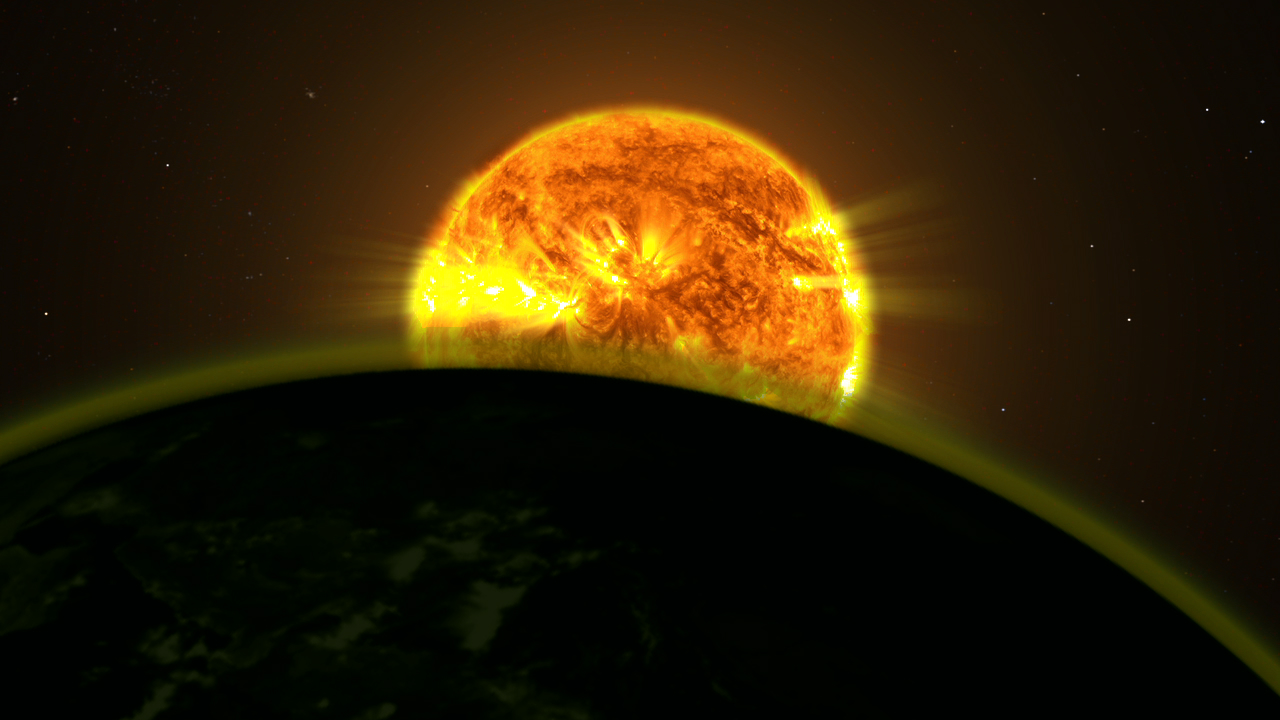Exploring Outer Worlds
Since the early 1990s, astronomers have known that distant planets orbit stars light-years from Earth. Although most of these alien worlds, called exoplanets, are too far away to be imaged directly, scientists have made detailed observations of their size and composition. One method of study involves watching a planet as it transits its host star. By measuring how the brightness and color of a star changes when a planet crosses in front of its disk, astronomers can indirectly determine the mass of the planet and the proximity of its orbit. Similar measurements can provide other key information, like the chemical makeup of a planet's atmosphere. Watch the video to learn more.

Scientists find creative ways to study the many planets that exist beyond our solar system.
Find out more about the methods used to explore exoplanets by watching this video.

When a planet crosses in front of a star, some of the star's light is absorbed, and some is transmitted, passing through the planet's atmosphere.

During a transit, a planet’s size can be determined by measuring the observed decrease in brightness of its star.

Scientists can identify which chemicals are present in a planet’s atmosphere by separating transmitted light into a spectrum of colors.
Credits
Please give credit for this item to:
NASA's Goddard Space Flight Center
Cover image courtesy of ESA/Hubble
-
Animators
- Dan Gallagher (USRA)
- Michael Lentz (USRA)
- Chris Smith (HTSI)
- Scott Wiessinger (USRA)
-
Video editor
- Dan Gallagher (USRA)
-
Narration
- Dan Gallagher (USRA)
- Avi Mandell (NASA/GSFC)
-
Narrator
- Dan Gallagher (USRA)
-
Producer
- Dan Gallagher (USRA)
-
Scientist
- Avi Mandell (NASA/GSFC)
-
Writer
- Dan Gallagher (USRA)
Release date
This page was originally published on Tuesday, December 17, 2013.
This page was last updated on Wednesday, May 3, 2023 at 1:51 PM EDT.
